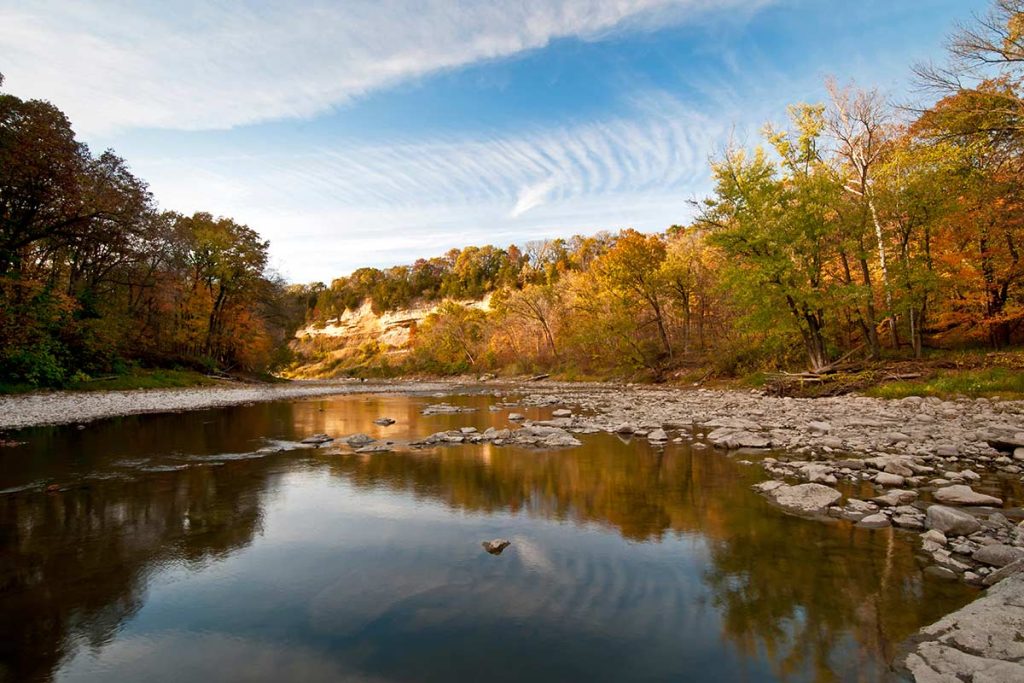In 2022, Illinois reinstated the statewide Conservation Reserve Enhancement Program (CREP) as a division of the federal Conservation Reserve Program (CRP). Along with the general conservation and restoration goals of CRP, CREP focuses on specific goals for each state.
Upon its return, the Illinois CREP released a number of guidelines and requirements for landowners interested in participating. These guidelines are intended to target the specific conservation aims of the state of Illinois. In this post, we’ll take a closer look at the goals of the Illinois CREP and how Illinois landowners can get assistance enrolling in the program in 2023.
Reduce sediment and nutrient runoff
The first goal of the Illinois CREP is to reduce the amount of sediment and nutrient runoff entering local waterways. Specifically, they aim to cut down the annual sediment, nitrogen, and phosphorous loading in the Illinois and Kaskaskia watersheds.
When there is excess runoff in these areas from local farms, it can result in algae blooms in the Gulf of Mexico, creating a dead zone. Reducing runoff will keep the water sources safe for local communities.
Increase avian population
Next, the second goal of the Illinois CREP is to increase the local avian (bird) population. As determined by the Illinois Wildlife Action Plan, growing populations of the “Species of Greatest Conservation Need” will be the focus of this goal. Native birds like purple martins and 50 other threatened, endangered, or vulnerable species will be targeted.
Because birds are an effective “indicator species,” they can be used to help scientists accurately determine and create high-quality wildlife habitats for many different species. Plus, an increase of birds will help improve pollination and insect control across the state. In addition, it can contribute to the reduction in sediment and nutrient runoff, further improving local water quality.
Increase native fish and aquatic insect species
Thirdly, the final goal of the Illinois CREP is to increase the number of native fish and aquatic insects by 15% in streams around the Kaskaskia Basin and the Illinois Basin. This includes environmentally sensitive species like stoneflies, mayflies, and caddisflies, as well as 196 species of Illinois freshwater fish.
As critical members of the local ecosystem, increasing fish and insect populations will support other native wildlife populations like reptiles, birds and mammals. Additionally, aquatic insects help local stream systems function healthily by processing organic matter and providing nutrients to predators.
Enroll in Illinois CREP
When signing up for CREP in Illinois, you can take advantage of a number of incentives provided to participants. For instance, enrollees can receive a 25% incentive rate above the average soil rental rate for certain conservation practices. Signup incentive payments, practice incentive payments, 50% cost share reimbursement, and other incentives are also offered. In the state of Illinois, CREP participants will receive an additional one-time lump sum payment for a 15-year or permanent easement.
If you’re considering enrolling in the Illinois CREP in 2023, reach out to our experts at FDC Enterprises. For two decades, we’ve helped landowners across the country with CRP and CREP documentation, establishment, and maintenance. We even offer high-quality CRP seed mixes for your project through our sister company, All Native Seeds. Learn how we can help you get started with your conservation project by sending us a message today.

